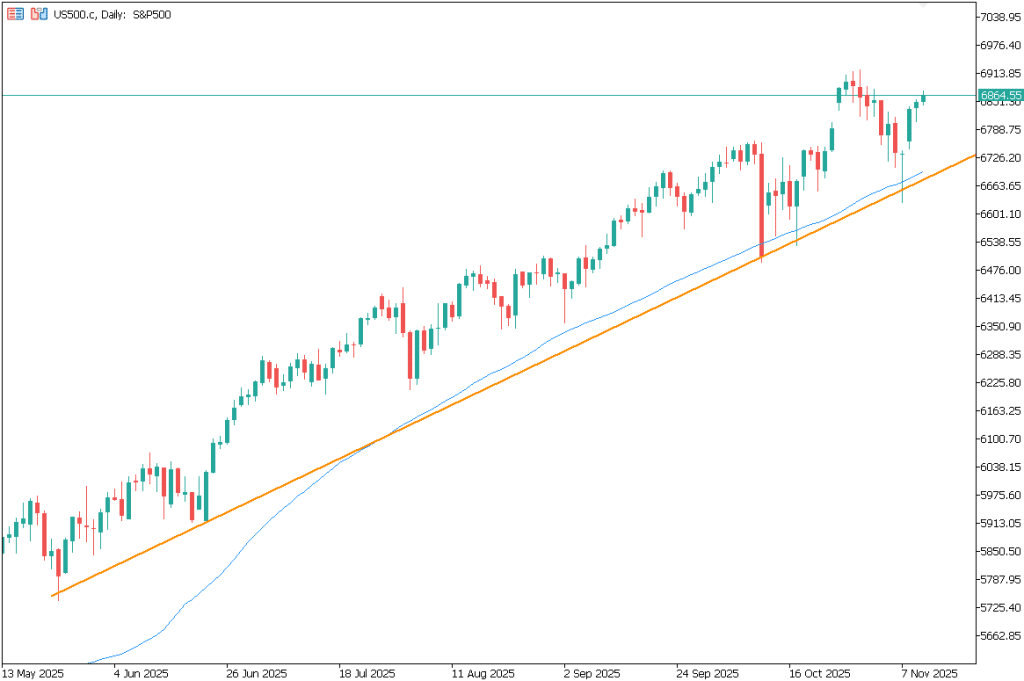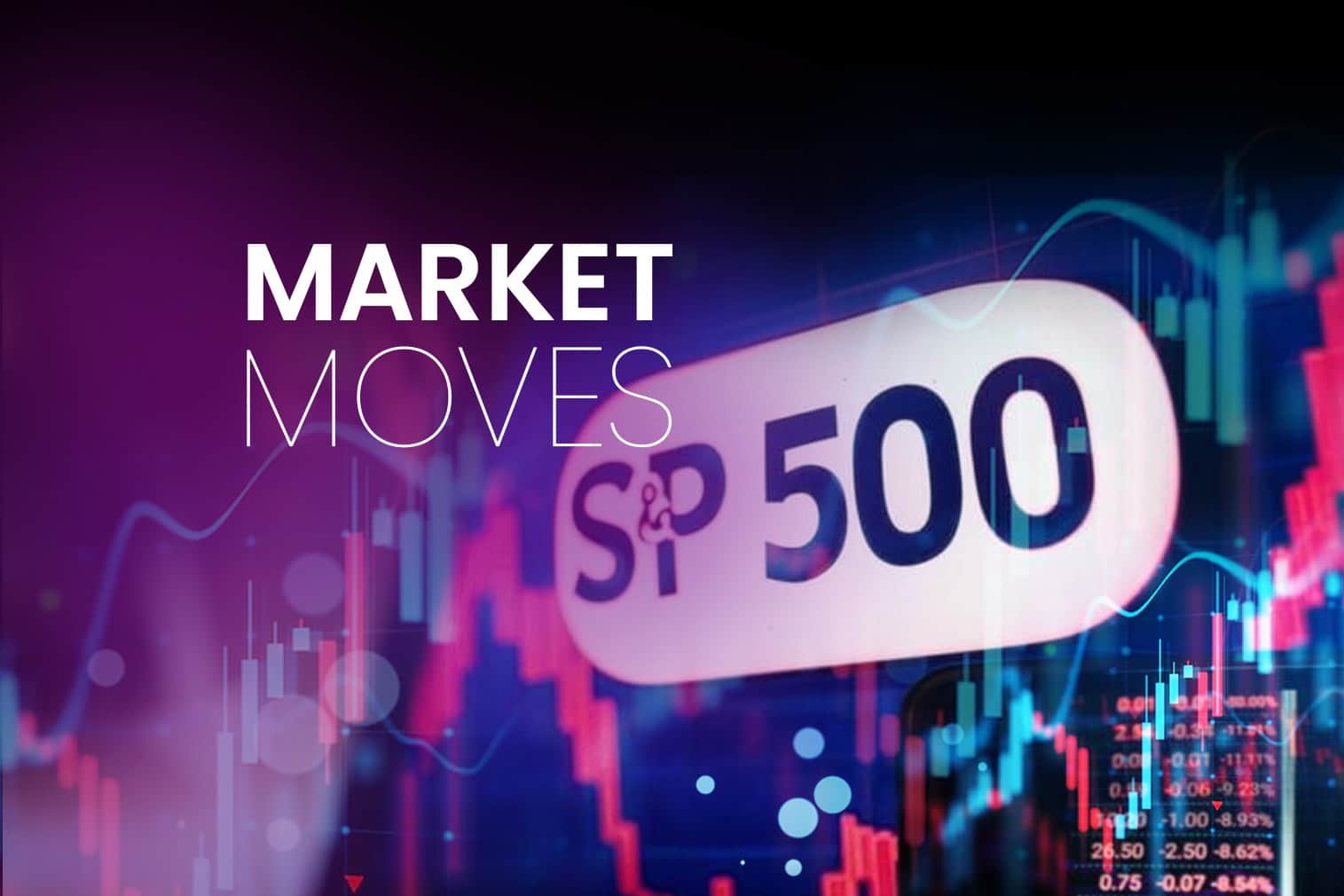S&P 500: The Uptrend That Refused to Break
Despite a wave of fear sweeping through global markets over the past few weeks, the S&P 500 index has once again demonstrated its resilience. As shown in the chart below, the index has consistently respected its long-term upward trendline, even during moments of significant volatility and uncertainty.

US500 chart, November 12, 2025. Source: TenTrade.com
A Wall of Worry — and the Market Climbed It
The first week of November saw what many analysts described as a “mini-correction.” The selloff, however, can largely be attributed to a temporary liquidity shortage visible in the U.S. repo markets – a vital source of short-term funding for institutions. As liquidity dried up, forced deleveraging created downward pressure across equities, particularly in high-valuation tech names.
Adding to the tension was the U.S. government shutdown, which weighed heavily on market sentiment and investor confidence. At the same time, a viral tweet by Michael J. Burry – the investor who famously predicted the 2008 housing crisis – amplified bearish sentiment.
In his post, Burry warned that the current environment might represent another “bubble”, and disclosures later revealed that he had opened short positions on two of the key companies leading the AI-driven rally: Nvidia e Palantir.
With sentiment indicators showing extreme fear, and institutional positioning turning net short, the stage seemed set for a more severe correction. And yet, the market held its ground.
The Unbroken Trendline
The uptrend line connecting the major lows since May 2025 remained intact throughout the volatility. Each time sellers pushed prices lower, buyers stepped in decisively – a clear signal that institutional demand remains strong beneath the surface.
Even during the November correction, the index bounced near the 6,650 area, exactly where the trendline and the 50-day moving average intersect – a technically significant confluence that often acts as a magnet for buy orders.
A Shift in Sentiment: From Fear to Optimism
Now, with the government shutdown expected to end on Thursday, November 13, and liquidity conditions in the repo markets showing clear signs of normalization, the narrative is shifting quickly.
Adding fuel to the rally is Donald Trump’s announcement of a “Tariff Dividend,” promising to return up to $2,000 to American households. Such a measure would represent a massive injection of liquidity into the economy – precisely the kind of catalyst that risk assets thrive on.
At the same time, the U.S. government’s renewed focus on energy infrastructure – including plans to expand nuclear power capacity to support the growing network of AI data centers – has been welcomed by investors as a sign of long-term commitment to technological and industrial leadership.
This move is also viewed as a strategic response to China’s rapid nuclear expansion, as Beijing moves closer to completing dozens of new reactors. The U.S. cannot afford to lag behind in the AI energy race, and markets are recognizing that reality.
Outlook: Eyes on New All-Time Highs
With macro headwinds fading, liquidity improving, and fiscal stimulus potentially on the horizon, the S&P 500 appears poised to challenge its previous all-time highs.
While caution remains warranted — especially given the rapid run-up in valuations within the tech sector – the broader market structure remains firmly bullish.












